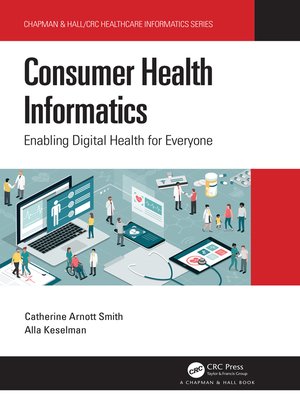Consumer Health Informatics
ebook ∣ Enabling Digital Health for Everyone · Chapman & Hall/CRC Healthcare Informatics Series
By Catherine Arnott Smith

Sign up to save your library
With an OverDrive account, you can save your favorite libraries for at-a-glance information about availability. Find out more about OverDrive accounts.
Find this title in Libby, the library reading app by OverDrive.



Search for a digital library with this title
Title found at these libraries:
| Library Name | Distance |
|---|---|
| Loading... |
"An engaging introduction to an exciting multidisciplinary field where positive impact depends less on technology than on understanding and responding to human motivations, specific information needs, and life constraints."
— Betsy L. Humphreys, former Deputy Director, National Library of Medicine
This is a book for people who want to design or promote information technology that helps people be more active and informed participants in their healthcare. Topics include patient portals, wearable devices, apps, websites, smart homes, and online communities focused on health.
Consumer Healthcare Informatics: Enabling Digital Health for Everyone educates readers in the core concepts of consumer health informatics: participatory healthcare; health and e-health literacy; user-centered design; information retrieval and trusted information resources; and the ethical dimensions of health information and communication technologies. It presents the current state of knowledge and recent developments in the field of consumer health informatics. The discussions address tailoring information to key user groups, including patients, consumers, caregivers, parents, children and young adults, and older adults. For example, apps are considered as not just a rich consumer technology with the promise of empowered personal data management and connectedness to community and healthcare providers, but also a domain rife with concerns for effectiveness, privacy, and security, requiring both designer and user to engage in critical thinking around their choices.
This book's unique contribution to the field is its focus on the consumer and patient in the context of their everyday life outside the clinical setting. Discussion of tools and technologies is grounded in this perspective and in a context of real-world use and its implications for design. There is an emphasis on empowerment through participatory and people-centered care.







